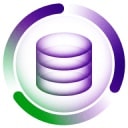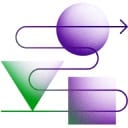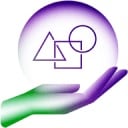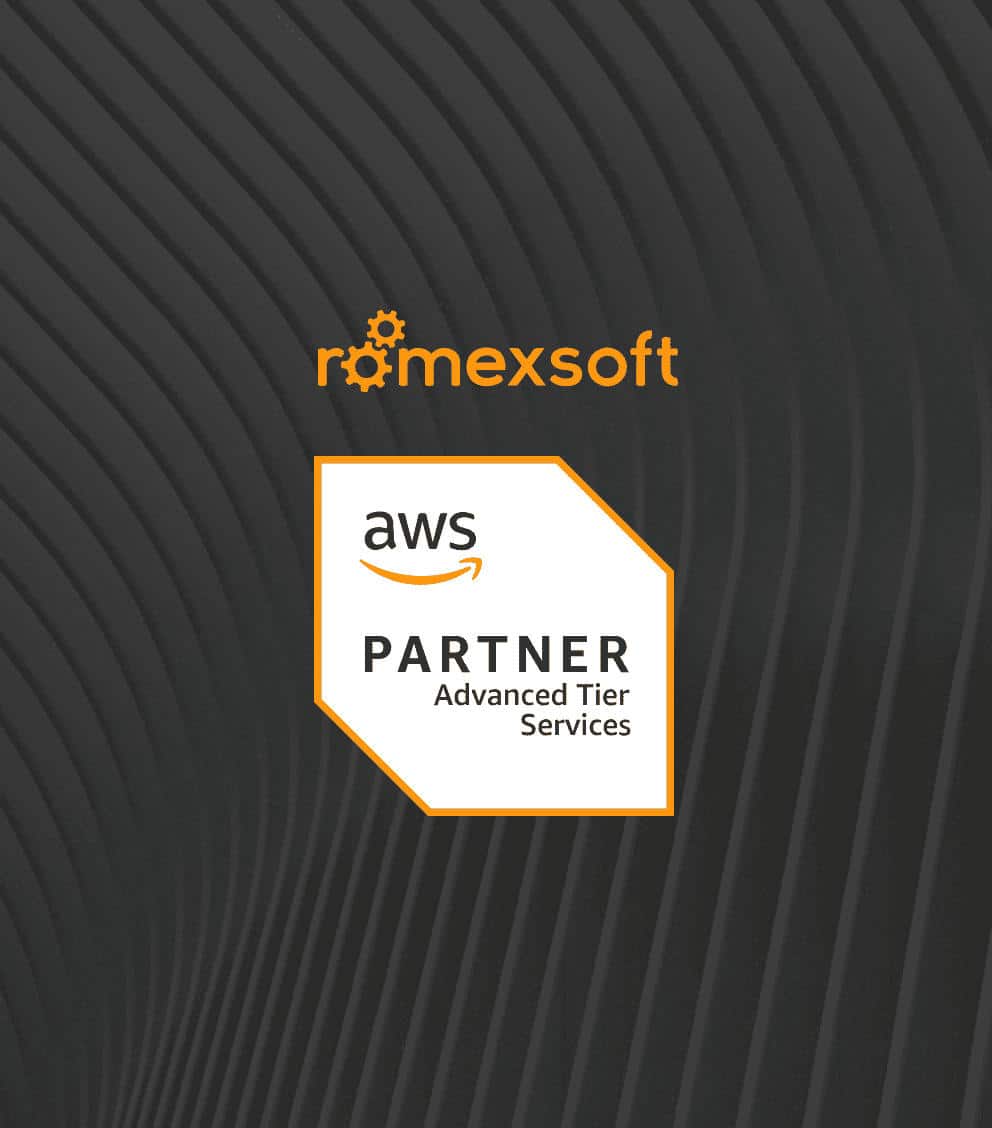Python Software Development Company
Our Python software development services help rapidly create, deploy, and scale applications that handle growing user demands without technical bottlenecks.
Python Development Services We Offer
Our Python developers deliver applications with a focus on readability and adaptability. This enables businesses to build quickly without managing manual memory systems or dealing with long configuration processes. The key Python software development services that make it ideal for custom solutions include:
Web App Development
Python web app development blends creativity, efficiency, and adaptability for quick turnaround times and long-term maintenance. Our developers swiftly create complicated apps or MVPs using the Django and Flask frameworks.
API Development and Integration
Creating and integrating APIs or 3rd-party services are much faster with Python’s clear syntax structure and dynamic typing. FastAPI and Sanic allow asynchronous and advanced routing, so APIs can efficiently handle high traffic and real-time requests.
ML and AI Solutions
We enable rapid AI model deployment for tasks like vision, language, and recommendation systems by using tools like TensorFlow and PyTorch. That powers apps with custom insight and predictive analytics to automate and optimize operational activities.
Data Science and Analytics
Insights from data is a strategic factor for turning information into action. We develop systems ranging from quick research and automation scripts to processing huge data sets using Dask, PySpark, or integration with big data and cloud platforms.
Cloud-based Development
Our experts use Python and AWS to build serverless functions that deliver cost-effective, event-driven solutions. We also use scripts for deployment, monitoring, log management, and CI/CD pipelines to improve cloud performance and reduce human error.
IoT App Development
We develop IoT using Python as it provides rapid prototyping, cross-platform compatibility, and broad protocol support. This allows connected devices to be used to improve operational efficiency, decision-making, and save costs.
Prototyping and MVP Creation
Python’s extensive ecosystem of libraries and massive package repository (PyPI) speed up development. We quickly and efficiently transform concepts into market-ready MVPs, to speeds up business validation and reduces expenses.
Migration to Python
We can rebuild outdated or inefficient systems to make them scalable and adaptive. We preserve the core business logic while improving performance, security, and maintainability to create an application that is easier to extend, integrate, and support.
Backend Development
Python is a great choice for developing backend systems that facilitate essential company operations. To create server-side app of any scale that is quick and simple to maintain, our teams use its flexibility and variety of frameworks and libraries.
Automation Testing
We implement automated testing frameworks to improve software reliability and speed up release cycles. Our tests cover functionality, performance, and integration to detect issues early to lower costs, and ensure consistent software quality.
Big Data Solutions
Our Python-powered big data solutions are designed and implemented to process enormous amounts of data accurately and quickly. To help you derive valuable insights, we create reliable systems for data gathering, storage, and analysis.
Here are our examples of real-world applications of infrastructure creation and software development.
Looking For An Experienced Python Development Partner?
Collaborate with Python specialists whom fast-growing businesses trust.
Why Choose Romexsoft's Python Software Development Services?
From MVPs to enterprise-level apps, we help our clients realize Python's full potential. Companies who work with us create dependable apps that grow with their company, reduce costs, and speed up delivery.
Our experts maintain safe code repositories, enforce stringent NDAs, and do thorough QA testing to safeguard both your software and your company.
We create Python systems that expand with your company development, from prototypes to enterprise programs, with ease.
Using cloud-native services, we develop and launch apps directly on AWS, guaranteeing scalability, dependability, and quicker delivery.
Select an Engagement Model for Your Project
We offer the next collaboration models that you can access by hiring Python developers whether you need a fully committed team or additional skilled engineers for your project.
Teams
Augmentation
Domains We Deliver Python Development Services For
Using Python’s benefits we develop applications for a wide range of sectors that fit evolving business goals and technical challenges with agility and reliability.
Why Should Your Project Be Programmed in Python?
Python allows you to use one base language for analytics, backend automation, product APIs, and simply creating smarter workflows. These are just some of the benefits of Python for business that make it the first choice for development.
Faster Development Cycles
Cost-Effective Development and Maintenance
Cross-Platform Compatibility
Scalability and Flexibility
Our Python Development Process
Python software development life cycle is accelerated and improved by language’s ease of use and capacity to manage challenging jobs. It accelerates things with its broad library support, easy-to-read language, and integration-friendly nature. Here is how we create a software application using Python:
Every project begins with understanding the problem, so in this stage the team:
- Define the scope of the application.
- Gather functional and non-functional requirements.
- Identify constraints (budget, performance, compliance).
This stage might also include deciding whether to build a web app with Django or Flask, a data science workflow with pandas and NumPy, or an automation script.
Once the requirements have been obtained, we design the architecture by:
- choosing suitable frameworks and libraries that complement the project’s goals
- constructing the data model (using SQLAlchemy, Django ORM, or plain SQL)
- outlining the setup, packages, and modules that comprise the project’s framework
- building UI/UX prototypes in case the project involves front-end interactivity.
Whether the project is a cloud-native web application, a business automation tool, or an ML pipeline, proper design ensures that it is modular, testable, and scalable.
At this point, the real coding starts:
- Developers adhere to PEP 8 style rules when writing code.
- To separate dependencies, we use virtual environments (such as Venv or Pipenv).
- Progress is monitored via version control systems.
- Testing and linting are automated through the use of Continuous Integration (CI) pipelines.
Python’s inherent flexibility and the dependability required of production-ready software are therefore balanced.
Testing is crucial for spotting mistakes early on and making sure software satisfies requirements. The following testing levels are included in Python projects:
- Unit tests, which concentrate on specific classes or functions.
- Integration tests examine how various system components interact with one another.
- Using tools like Flake8 or Pylint for static analysis and linting, which examine the code for any errors, unneeded imports, and style problems.
Furthermore, tests are executed by automated pipelines each time new code is committed.
We get the application ready for deployment after testing is complete. To ensure that the project operates consistently across many environments, we containerize it using Docker. Depending on the needs of the project, we choose services like Elastic Beanstalk, ECS, or Lambda for hosting when we deploy directly to AWS.
Additionally, we use technologies like Jenkins or GitHub Actions to set up CI/CD pipelines that automatically package, test, and release updates. We control dependencies to ensure that the same library versions are used in development and production to maintain consistency.
Following deployment, the project needs continuous assistance. We install security fixes when necessary, offer updates with new features, and address bugs as they arise. To ensure that the application keeps operating well, we also keep an eye on performance.
We examine dependencies and update them as needed because Python libraries and frameworks are updated often. This keeps the program secure, stable, and up to date with the newest tools.
Python Frameworks and Development Tools
Frameworks
DevOps
Machine Learning and Data Science
Database
Testing and Quality Assurance
Python FAQ
It's doubtful that Python will replace PHP very soon because both languages are widely used in web development. Although both Python and PHP are practical programming languages, their advantages and disadvantages differ.
- Python: Well-known for its ease of use and adaptability, Python is excellent for projects involving a lot of data, AI, and machine learning.
- PHP: Made especially for web development, PHP works well with conventional web tools and is frequently used to create websites with a lot of information.
Although Python is becoming more and more popular, PHP is still frequently used in web development. Your project's objectives, your team's capabilities, and the type of application you're creating will all influence the ideal option.
Python is used in web application and API development with Flask and Django, and is also suitable for data analysis and visualization with Pandas, NumPy, and Matplotlib. Also, for intelligent applications and predictive models creation with TensorFlow, PyTorch, Keras, and scikit-learn. In addition, Python is often used in the development of cross-platform applications using Tkinter, PyQt, or Kivy, as well as in IoT projects using Raspberry Pi or MicroPython. The language is also effective for creating network utilities, for developing games using frameworks such as Pygame, and even for blockchain systems.
Because it streamlines the entire workflow, from research to production, Python is frequently utilized in AI and ML. Models can be rapidly prototyped in notebooks and then put into production using frameworks such as AWS SageMaker or FastAPI. Additionally, the language has specific ecosystems for computer vision, reinforcement learning, and natural language processing, providing teams with the appropriate tools for many fields.
In addition to handling various forms of data, including text, photos, audio, and unstructured data, it also provides robust visualization and explainability libraries that facilitate the straightforward presentation of findings. Teams can monitor experiments and guarantee reproducibility with the help of programs like MLflow or Weights & Biases. Lastly, Python's smooth integration with GPU/TPU hardware and AWS cloud services enables effective training and scaling of big models.
Yes. In order to minimize downtime, we use Python to modernize legacy systems incrementally. We begin by evaluating your existing system and creating an architecture based on Python and AWS. While essential components are re-platformed onto AWS services, legacy functionality is progressively replaced with clean APIs. We provide observability for quick issue discovery and use CI/CD, automated testing, and security checks to ensure quality throughout the process. We offer knowledge transfer, documentation, and optional continuing assistance after launch.
Yes, Python runs smoothly on AWS. It is frequently used to conduct data or AI projects in the cloud, automate workflows, and create applications. Depending on the requirements of the project, Python can be implemented in serverless environments, containerized workloads, or conventional virtual machines. Additionally, it seamlessly interfaces with cloud-native machine learning platforms, storage solutions, and managed databases. Building, scaling, and maintaining contemporary systems on AWS is made simple by Python's robust SDK support and infrastructure-as-code options.
Discover more related services and resources on how to get future-ready digital products that combine modern architecture, global accessibility, and data-driven intelligence.





















